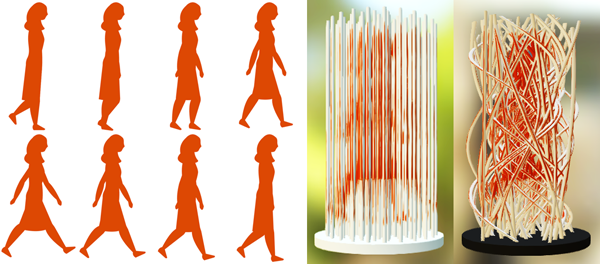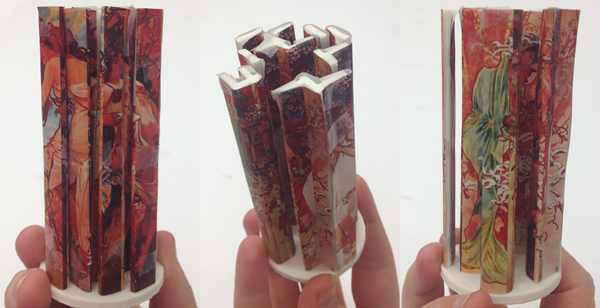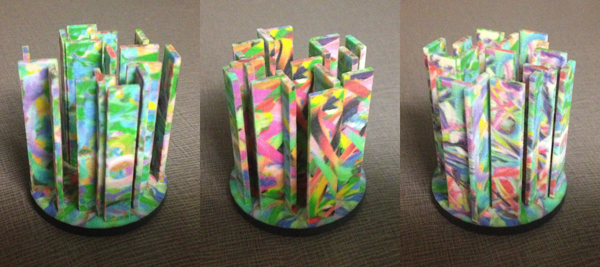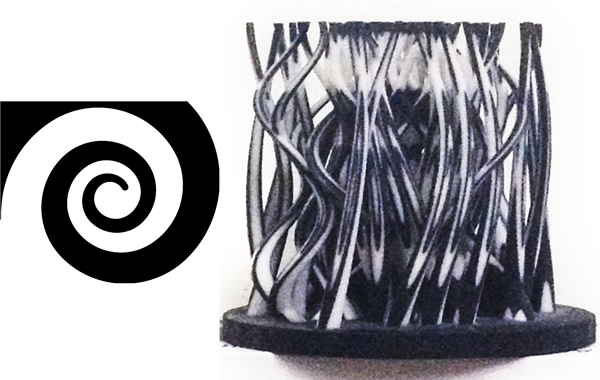Image Sculptures
Jennifer Weiler
In most areas of art and design, two-dimensional and three-dimensional objects have been seen as distinct categories. While 2D can portray the illusion of depth, the concept of a 2D image containing actual depth, similar to that of a sculpture, seems paradoxical. This research is focused on combining objects with images in order to better understand some of the possibilities of perspective and illusion. The end results are complex sculptures capable of representing several 2D images.
below: Example of the finished generated models without images. From left to right: monoliths, cylinders, and spirals

below: Examples of the vertex-based objects that images are placed on.

below: Examples of some of the outputted image files that would be placed on the sculptures.From left to right: monolith, cylinder, spiral.

below: model made up of divided images from Alfons Mucha's The Seasons (1896)
below: model made of cylinders that display Arizona State University's Sun Devil symbol from any angle
For cylinders and spirals, it is possible to use multiple source images when creating the new images. By doing so, the finished sculpture can display different images when viewed from different directions. This can be done with any number of images, though if there are too many they may start to overlap and blur each other.
By using frames of an animation as the separate images, it is possible to create an object that displays the illusion of animation when rotated, in a similar fashion to a zoetrope.
below left: A simple animation walk cycle in eight images. Below right: examples of these images on the cylinders and spirals.

Currently, the vast majority of affordable 3D printers produce objects composed of a single color. This unfortunately means the models cannot be printed with the images on them, though in some cases it is possible to find workarounds. For example, a model composed of monoliths can be printed without color. The images that are meant to be on the outside of the monoliths can be printed separately on a standard inkjet printer. Then, the paper images can be attached to the 3D print using tape or glue.

For this project, I was fortunate enough to have some models printed with a ZCorp 3D printer, which can produce models containing thousands of colors, but contain a rough texture and are more fragile than standard 3D printed objects. Despite the mildly rough surface texture, the end prints were clear enough that the surface colors were apparent, allowing the viewer to discern the 2D images in the sculpture.

In the case of the spirals and cylinders, the thinness of part of the sculpture originally proved to be a problem with printing. To compensate for that, I created a relatively short sculpture, which was wider than it was tall, so that the spirals would not have to be as tall. In addition, in constructing the spirals, I added a variable that tapers the size of the spirals as they move upward, allowing the bottom of the spirals to be thicker. These changes lower the risk of part of the sculpture collapsing under its own weight during the construction process.

